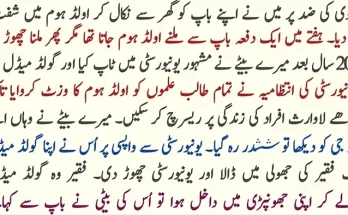Attention-deficit/hyperactivity disorder (ADHD) is a common neurodevelopmental condition that affects children, impacting their ability to focus, stay organized, and control impulses. While ADHD can present challenges for both children and their families, early diagnosis and effective management strategies can help children thrive. Understanding the symptoms, causes, and treatment options for ADHD is essential for supporting children with the condition.
ADHD typically presents itself in three main forms: inattentive, hyperactive-impulsive, and combined. Children with inattentive ADHD may struggle with paying attention, following instructions, and completing tasks. They may be easily distracted, forgetful, or appear disorganized. On the other hand, hyperactive-impulsive ADHD is characterized by excessive fidgeting, restlessness, difficulty sitting still, and impulsive behavior such as interrupting others or acting without thinking. Many children with ADHD exhibit a combination of both inattentive and hyperactive-impulsive symptoms, which can vary in severity.
The exact causes of ADHD are not fully understood, but research suggests that a combination of genetic and environmental factors plays a role. Children with a family history of ADHD are more likely to develop the condition, and certain prenatal factors, such as exposure to tobacco smoke or alcohol, may increase the risk. Brain structure and function differences, particularly in areas related to attention and impulse control, are also believed to contribute to ADHD symptoms.
Diagnosis of ADHD involves a comprehensive evaluation by a healthcare professional, usually a pediatrician or child psychologist. The evaluation includes gathering information from parents, teachers, and caregivers about the child’s behavior in different settings. It is important to note that ADHD symptoms can overlap with other conditions, such as anxiety or learning disabilities, so a thorough assessment is needed to ensure an accurate diagnosis.
Once a child is diagnosed with ADHD, a variety of treatment options are available to help manage symptoms. Behavioral therapy is often recommended as a first step, especially for younger children. Therapy helps children develop skills to manage their behavior, improve organization, and strengthen social interactions. Parental training programs can also be beneficial, teaching parents how to create a structured and supportive environment that encourages positive behaviors.
Medication is another treatment option for ADHD, particularly for children with moderate to severe symptoms. Stimulant medications, such as methylphenidate or amphetamines, are commonly prescribed and have been shown to be effective in reducing hyperactivity and improving focus. Non-stimulant medications are also available for children who do not respond well to stimulants or who experience side effects. Medication should always be part of a comprehensive treatment plan that includes behavioral strategies and ongoing monitoring.
School support is crucial for children with ADHD, as they often struggle with attention and organization in the classroom. Teachers can implement accommodations such as providing shorter tasks, offering extra time for assignments, and creating a structured environment with clear expectations. Collaboration between parents, teachers, and healthcare professionals is key to ensuring that children with ADHD receive the support they need both at home and in school.
In conclusion, ADHD is a complex condition that requires a multifaceted approach to management. Early diagnosis, behavioral interventions, and sometimes medication can help children with ADHD lead successful and fulfilling lives. With the right support system in place, children with ADHD can develop the skills they need to navigate their challenges and reach their full potential.


